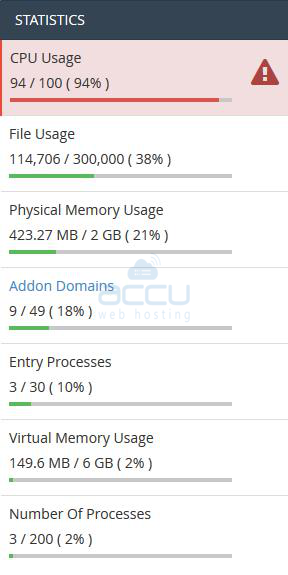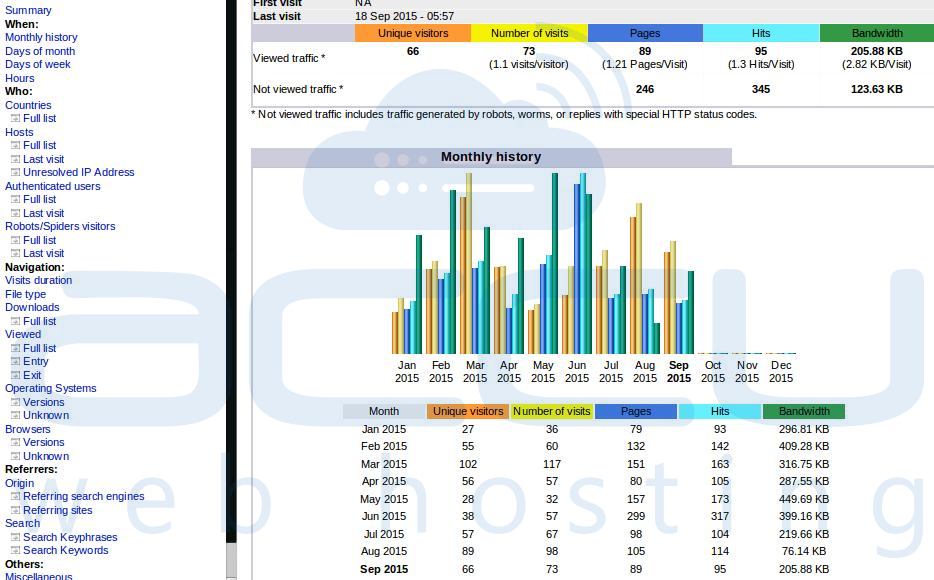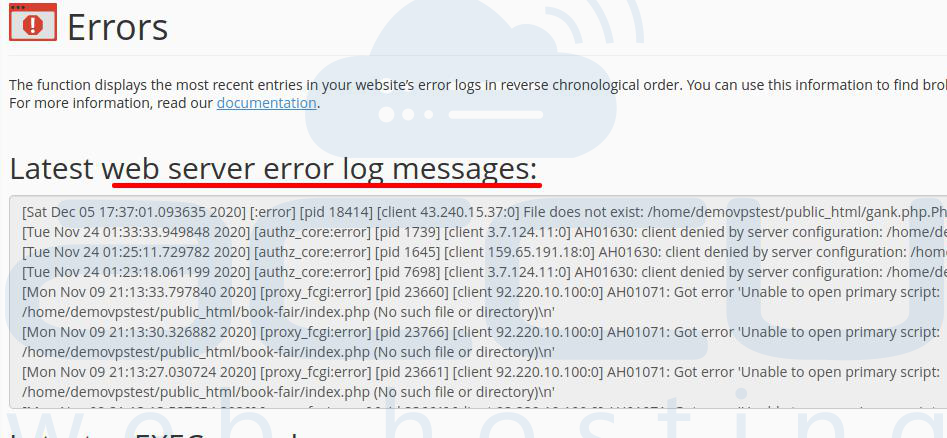Introduction:
503 Service Unavailable error typically occurs due to high resource consumption by your web hosting service or a script within it. In this article, we'll explore the common causes of this issue and guide you through some effective methods to troubleshoot and resolve it.

1. Check Resource Usage in cPanel:
One of the first steps in identifying the cause of the 503 error is to check the resource usage in your cPanel. This will help you determine if you're hitting any resource limits set by your hosting provider. Keep an eye on the CPU, memory, and bandwidth usage to see if any of them are reaching critical levels.

Please take a look at our article on how to monitor resource limits from cPanel.
How To Monitor Resource Limit Information In CPanel?
2. Look for Unusual Traffic with AWStats:
Within your cPanel, you can access AWStats to analyze your website's traffic. Look for any abnormal spikes or unusually high amounts of traffic hitting your site, as this can lead to the 503 error. Identifying such patterns will give you a clue about what might be causing the resource overload.

AWStats provides a visual representation of your site's statistics. You can easily view these statistics for Linux cPanel/WHM users by following the steps outlined here.
3. Temporarily Disable Scripts and Plugins:
To pinpoint the root cause of the problem, try disabling your website's scripts and plugins temporarily. Then, attempt to access your website again. If the error disappears after this step, one of the disabled plugins or scripts might be responsible for the resource overload.
You can refer to our following article to disable the plugin,
How To Deactivate/ Disable WordPress Plugins Without Accessing Wp-Admin?
4. Identify Troublesome Plugins or Scripts:
You can go a step further by systematically renaming the folders for your plugins or scripts one-by-one. This method can help you isolate the problematic plugin or script that's causing the excessive resource consumption. Once you identify it, you can take appropriate action to fix or replace it.
If you're encountering issues with your website and suspect that a plugin might be the cause, enabling debug mode and debugging the website code can help you identify the problem. To enable debug mode, refer to the following article.
This article provides step-by-step instructions on how to enable and use the WP_DEBUG feature effectively.
5. Rename the .htaccess File:
Sometimes, the issue might be related to the .htaccess file. Try renaming it temporarily to see if that resolves the error. If it does, there might be some incorrect rules or configurations in the .htaccess file that need correction.
6. Check Server Logs and Fix the Code:
Server-side logs contain valuable information about your website's activities and errors. Analyzing these logs can help you identify the specific issues causing the 503 error. Once identified, you can take the necessary steps to fix the code and resolve the problem more efficiently.

You can refer to our following article to check website error logs from the cPanel,
How To Check Your Website’s Error Log In CPanel?
7. Stop Overwhelming Processes:
If none of the above methods yield results, you might have some ongoing processes overwhelming your server's capacity. Identify these processes and kill them to free up resources and potentially resolve the error.
Conclusion:
Encountering a 503 Service Unavailable error can be frustrating, but armed with the right knowledge, you can efficiently troubleshoot and fix the issue. Start by checking resource usage, disabling plugins, and inspecting server logs. If the cause remains elusive, don't hesitate to seek assistance from your hosting provider's technical support team. With determination and a systematic approach, you'll have your website up and running smoothly again in no time.



